Looking for the best places to advertise online and make your company recognized by a large number of users? To achieve this goal, an effective platform for communicating with your target audience is needed. TeqBlaze has compiled a list of places where to advertise online. Excited to welcome potential customers and maximize your return on investment (ROI)? Let's figure out together which is the best place to put ads.
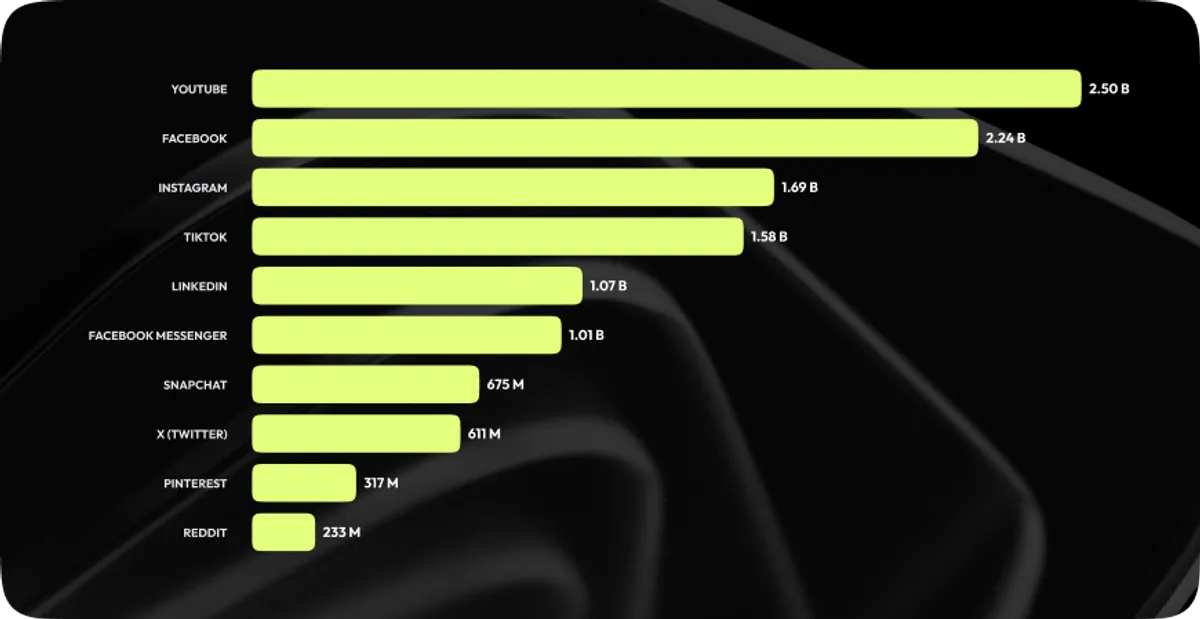
Potential advertising reach reported by top social platforms
11 Best places to advertise in 2025
Below, TeqBlaze examines popular online advertising services and explores their advantages and disadvantages.
Google Ads
Google Ads has become the leading online advertising platform that works through Google Search Ads or Google Display Network.
Google Search Ads refer to ads placed in Google search results when people search for goods using specific keywords or phrases. The advertiser chooses these keywords at the campaign creation stage. Such a campaign helps reach the target audience quickly and effectively based on search queries.
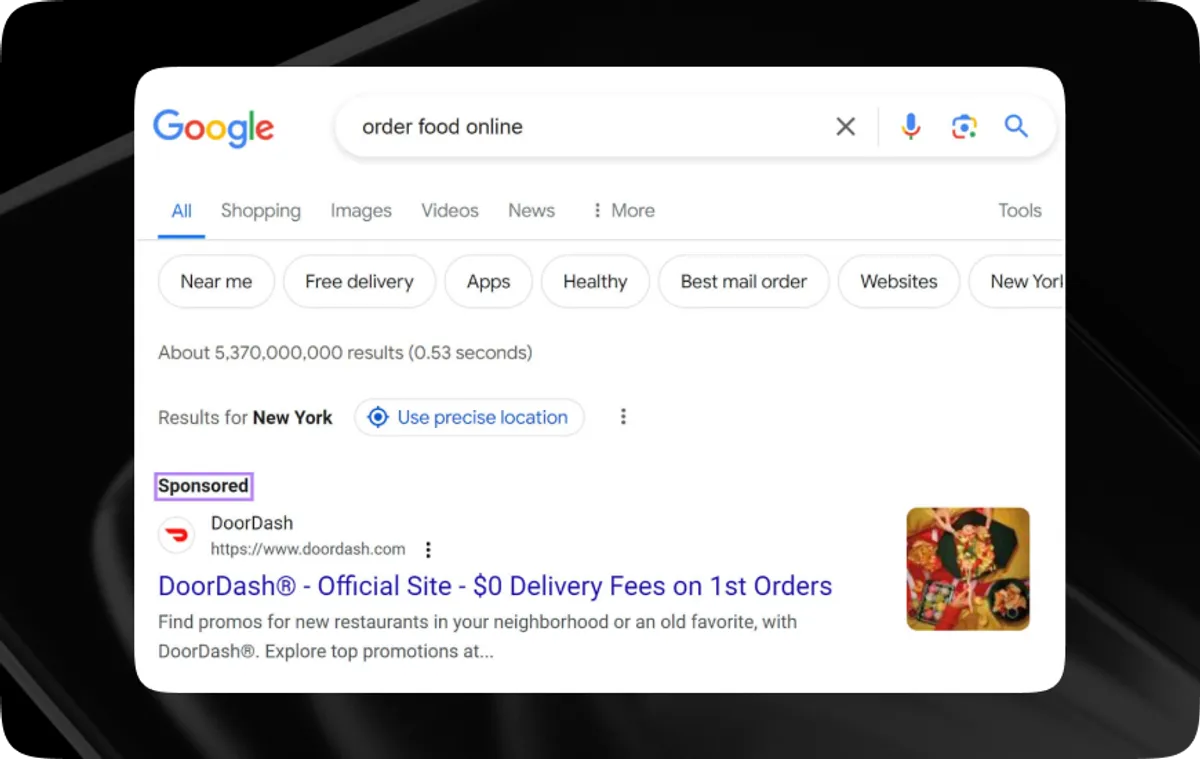
Google Search Ads pros:
You can control and use precise targeting to show your ads to those who enter specific queries into the search bar. You can also target specific keyword phrases, demographics, geography, and devices.
You can control the advertising rate and set a limit on the daily budget or the budget for the entire advertising campaign.
When you launch your ads and collect the first statistics, it is easy to edit and adjust.
Google Search Ads cons:
There is a high competition for key phrases and audiences.
Ad campaign costs can quickly grow, especially if you target highly competitive keyword phrases or use a common targeting approach.
The ads from the Google Display Network are another type of advertising campaign that allows you to publish ads outside of Google websites (Google Maps, Gmail), as well as on partner websites, mobile apps, etc. Using banners, text ads, and other various ad formats, media campaigns attract the attention of potential customers when they view content on other websites or apps.
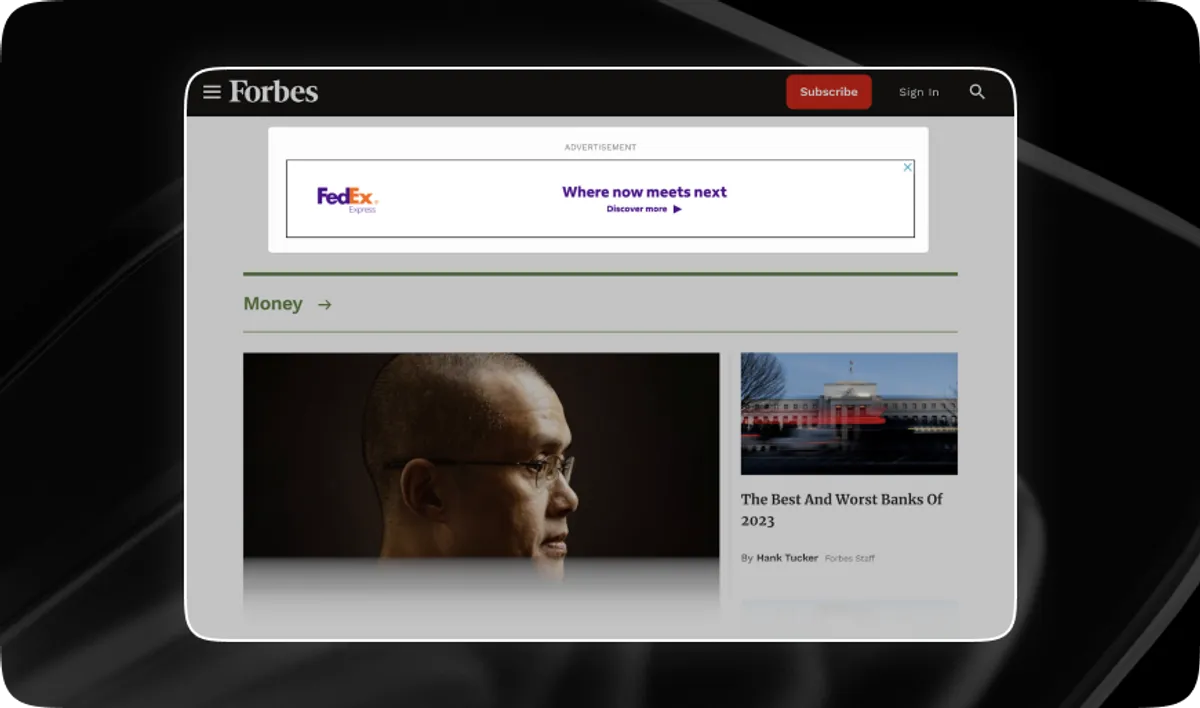
Google Display Network pros:
Since Google is known as the best place for ads globally, with a dominant market share of over 85%, it guarantees a great reach.
Google Display Network offers low traffic costs compared to the usual contextual advertising.
You can gather different audiences, selecting different creatives for each group of users.
Google Display Network cons:
Google Display Network is not suitable for targeting narrow geolocations.
Despite the low conversion price, there are still businesses for which this model is too expensive and unprofitable. In this case, you must look for other sources of attracting leads.
In the case of Google Display Network, you will need more time to develop an algorithm and test the audience and other settings.
Bing Ads
Bing Ads works similarly to Google, although it has a smaller user base. Still, it is considered one of the best places to advertise online. Advertisers can create individual bids for key queries and place their ads on the organic search results' sides, top, and bottom.
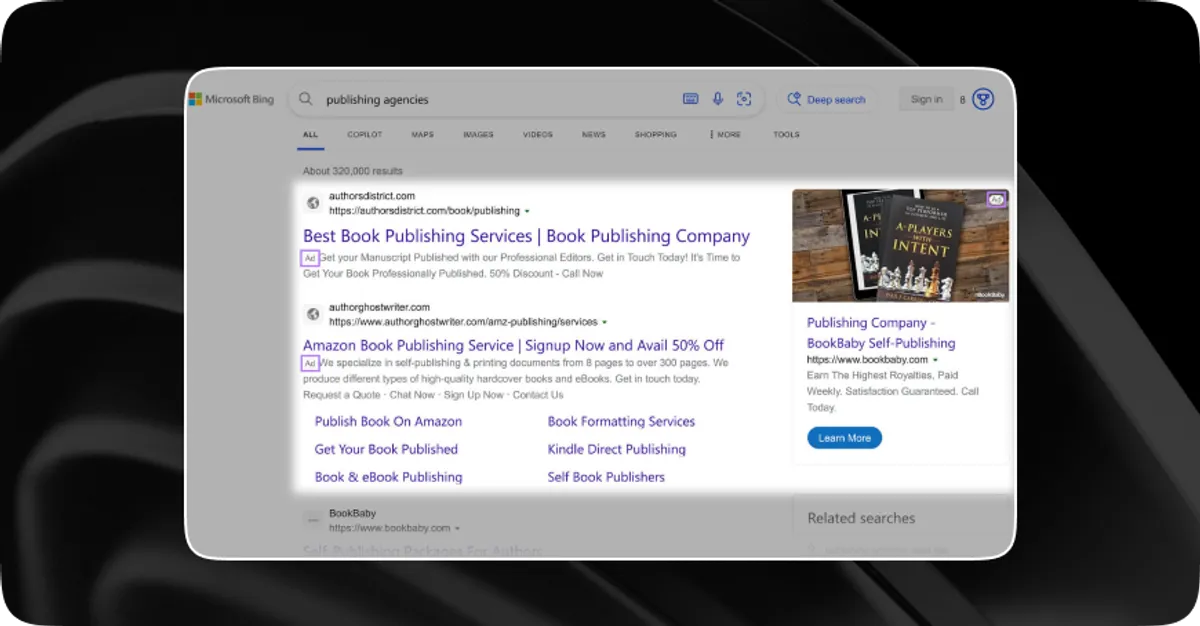 Bing Ads pros:
Bing Ads pros:
Microsoft Search Network statistics show that 13.2 billion searches from PCs are performed on the platform monthly, and there are 655 million unique users from PCs.
Your ads will be displayed on multiple websites operated by Microsoft, including Yahoo and AOL.
With Microsoft ads, you can customize targeting to specific audiences. You can also adjust bid modifiers according to the data you receive from LinkedIn.
Bing Ads cons:
Bing's market share is much smaller than Google's. This means Bing Ads' audience reach and potential impact may be more limited.
Bing tends to lag behind Google in terms of updates and improvements.
Meta Ads
Meta Ads include targeted ads that appear on meta resources, specifically Facebook and Instagram. These ads feature images, carousels, and videos and are displayed in the user's feed when scrolling through Stories or Reels on Facebook and Instagram.

Meta Ads is a powerful place where to advertise, offering advanced targeting options. Advertisers can find their target audience based on demographics (age, gender, location, marital status, and income) and interests.

Meta Ads pros:
Access to quality data allows you to reach more relevant potential customers.
Creative ads, such as videos, graphics, and carousels, will help attract your target customers and pique their interest in your product or service.
Higher conversion rates make Meta one of the best web advertising platforms for small businesses that need to consider limited advertising budgets.
Meta Ads cons:
Limited advertising ability - some products and services are prohibited for promotion.
Your ad must undergo moderation, which can take up to 24 hours.
Although the platform has a built-in A/B testing option, getting statistically significant results will take a long time if your ad spend is not high enough.
Amazon DSP
Amazon DSP is one of the best places to advertise, with numerous opportunities to promote products on the largest marketplace. Millions of people visit Amazon daily, which gives companies a great opportunity to reach a relevant target audience and increase sales.
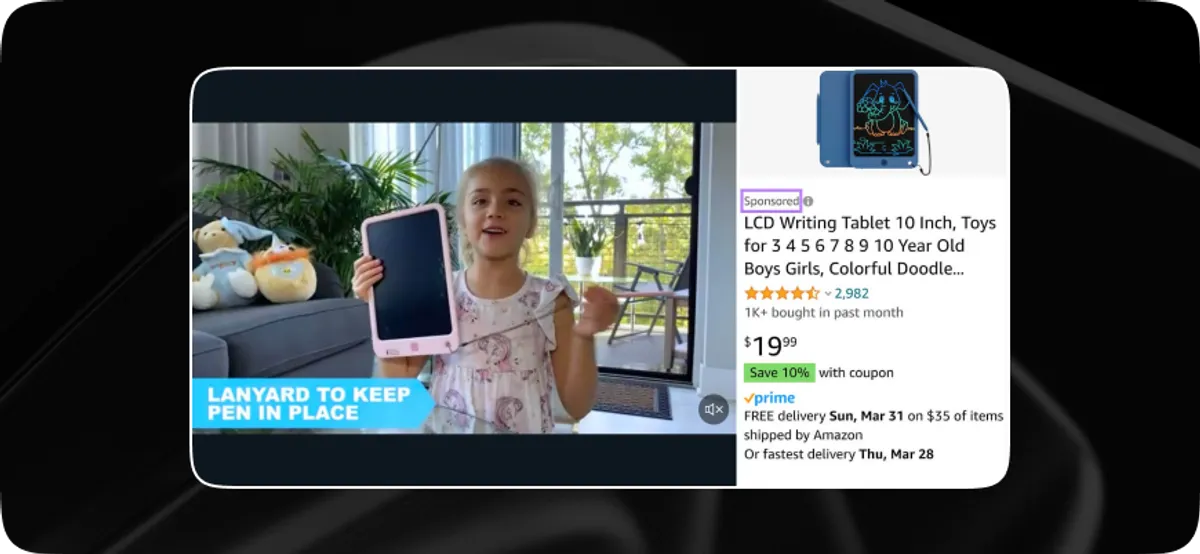
Amazon DSP pros:
Amazon DSP offers a variety of ad options to meet different marketing goals.
Amazon PPC campaigns are compatible with multiple devices, making it easy to display a link to a sponsored product in Amazon apps on smartphones, tablets, laptops, etc.
Amazon DSP cons:
Amazon's dominant position in the marketplace entails intense competition among sellers. To maximize ROI, you need a well-planned and adaptable advertising strategy.
YouTube
In a 2023 survey, large B2C advertisers from the US and Canada were asked to share their preferred social platform for the highest return on ad investment (ROAS). The results showed that for 48% of survey participants, YouTube was the platform with the highest ROAS for their business. And that remains very much the case in 2025: YouTube users watch about a billion hours of videos daily, which shows the great popularity of this media hosting platform. In this case, investing in video advertising can be very profitable, as it has its characteristics compared to advertising that uses images or text.
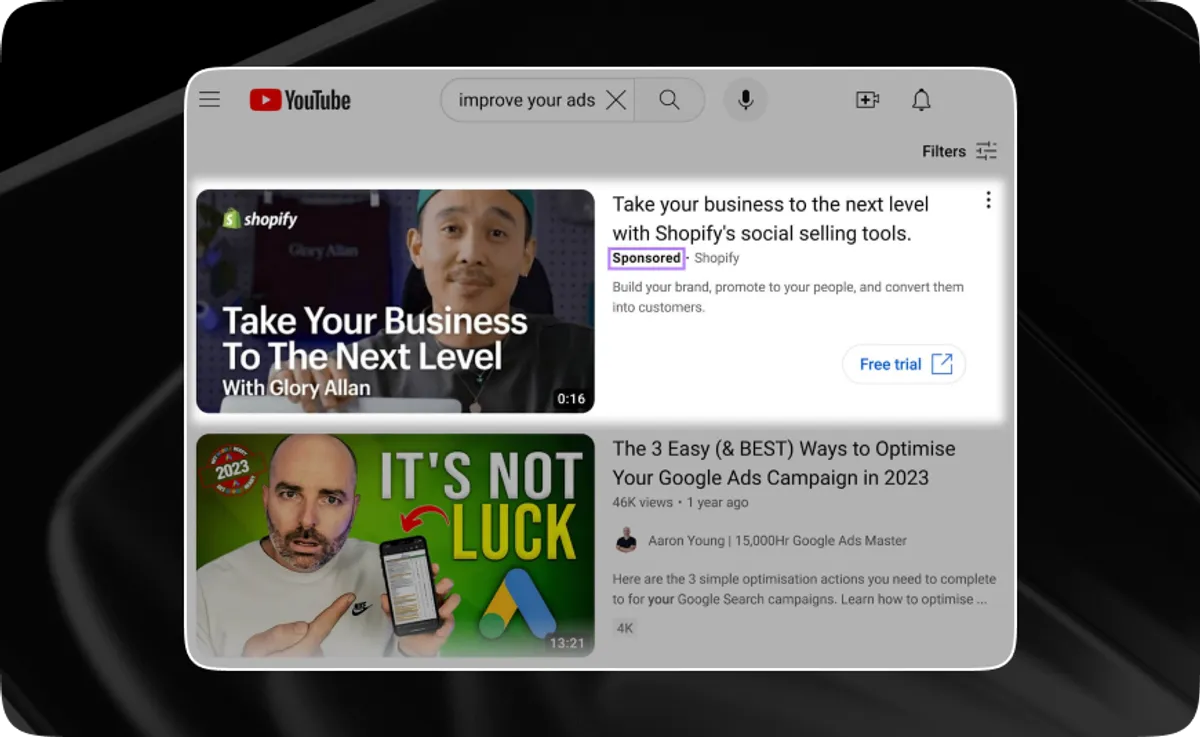
YouTube pros:
YouTube is the second most popular website and search engine to advertise online after Google. In addition, Google's algorithm prioritizes YouTube videos in search results and indexes all video content.
YouTube offers various ad formats such as skippable, non-skippable, splash, and others that can be customized to suit business needs and budgets.
YouTube uses user search behavior, considering specific topics and keywords that users have previously shown interest in.
YouTube cons:
It is important to grab viewers' attention quickly before they switch to the next video.
YouTube ads may be skipped or blocked by ad-blocking software, which can potentially lower conversion rates.
LinkedIn is a social network for businesses that draws attention to a company through sponsored or dynamic ads. This platform's promotion system focuses on the niche of B2B organizations. But at the same time, end-customer-oriented businesses (B2C) will also find LinkedIn useful. For example, you can use this platform to launch a recruitment advertising campaign, which will be beneficial if you want to attract candidates from your industry. Ads appear in the right-hand column, newsfeed, and sponsored InMail messages or posts.
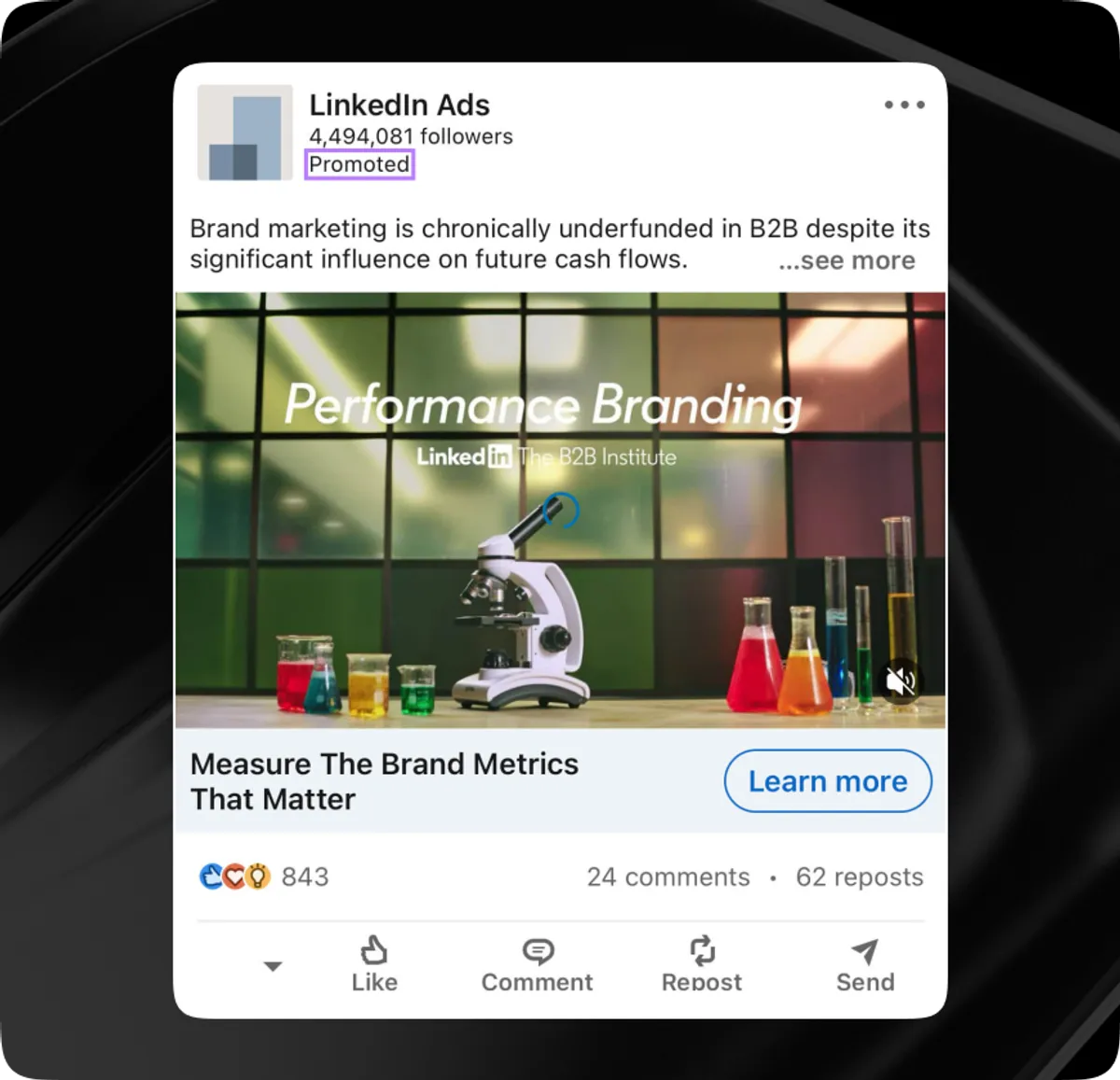
LinkedIn pros:
Email interaction makes advertising direct and creates a sense of personal appeal.
You can target your ads to an entire industry or location, but you can also customize the display more specifically based on business size, job title, seniority, etc.
LinkedIn cons:
The audience for advertising may be limited.
Spotify Ads
Spotify Ads revenue surpassed $2 billion for the first time, marking a 13% year-over-year increase. This growth was driven by a global rise in ad impressions across music and podcasts, as well as the expansion of automated sales channels. The platform's ad-supported monthly active users reached 425 million, up 12% from the previous year. These figures highlight Spotify's continued ability to generate revenue from its user base by enhancing targeting capabilities and diversifying advertising formats.
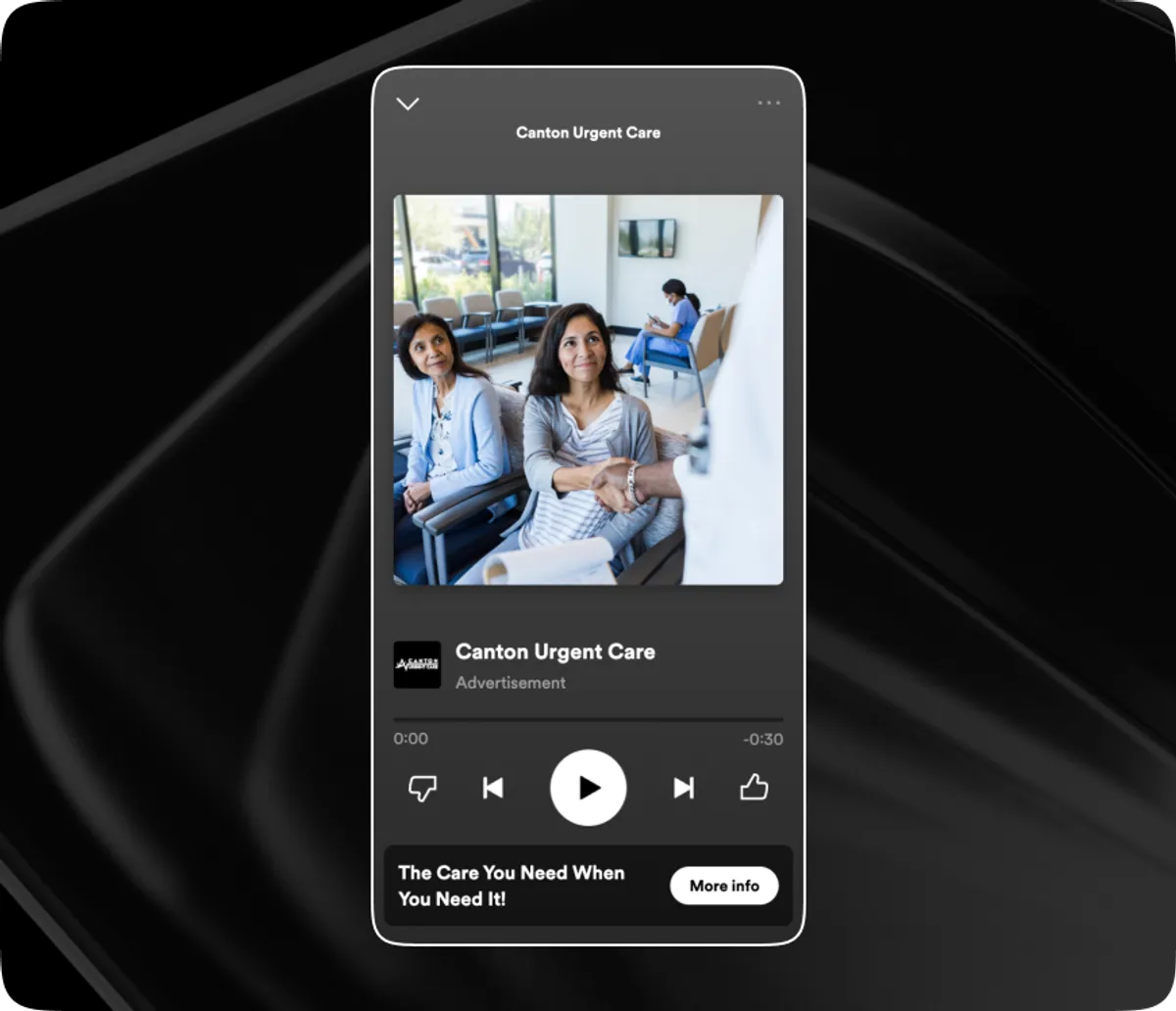
Spotify Ads pros:
The platform offers various targeting options based on location, age, gender, and music preferences.
Spotify Ads is a cost-effective way to reach a larger audience than other places to advertise your business.
Spotify Ads cons:
The platform primarily benefits musicians and bands, record labels, brands, podcasters, and event promoters.
TikTok
TikTok has become a popular platform for millions of people, including online shopping lovers. Sellers can utilize the platform’s various commerce tools to browse and purchase items quickly within seconds.
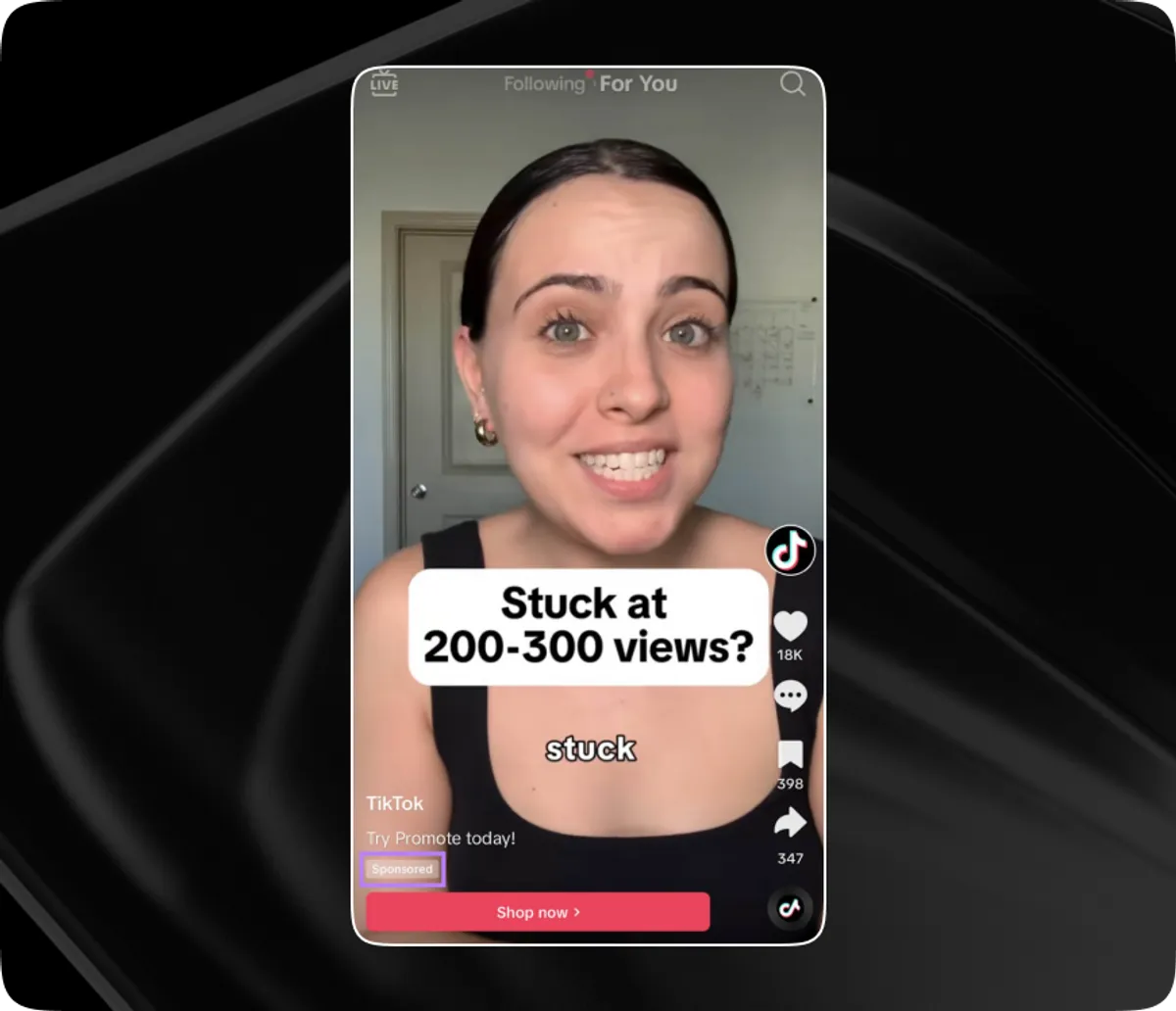
TikTok pros:
Sellers can add product links to their videos and bios in TikTok, allowing users to purchase directly from the app's browser.
Unlike Instagram and Facebook, TikTok's algorithm doesn't rely on the number of followers to determine the content's audience.
TikTok cons:
TikTok ads will not cater to every online business as the platform targets a specific demographic, namely Generation Z and millennials.
CTV and OTT platforms
CTV and OTT platforms are predicted to become the leaders in information and entertainment content by 2030. Both the thermal refers to video content; however, don't mix them up. The main difference between them is the advertising model. CTV is often used to watch regular TV channels where advertising is the main revenue source. On the other hand, most OTT services offer videos without advertising and receive profit mainly from subscriptions.
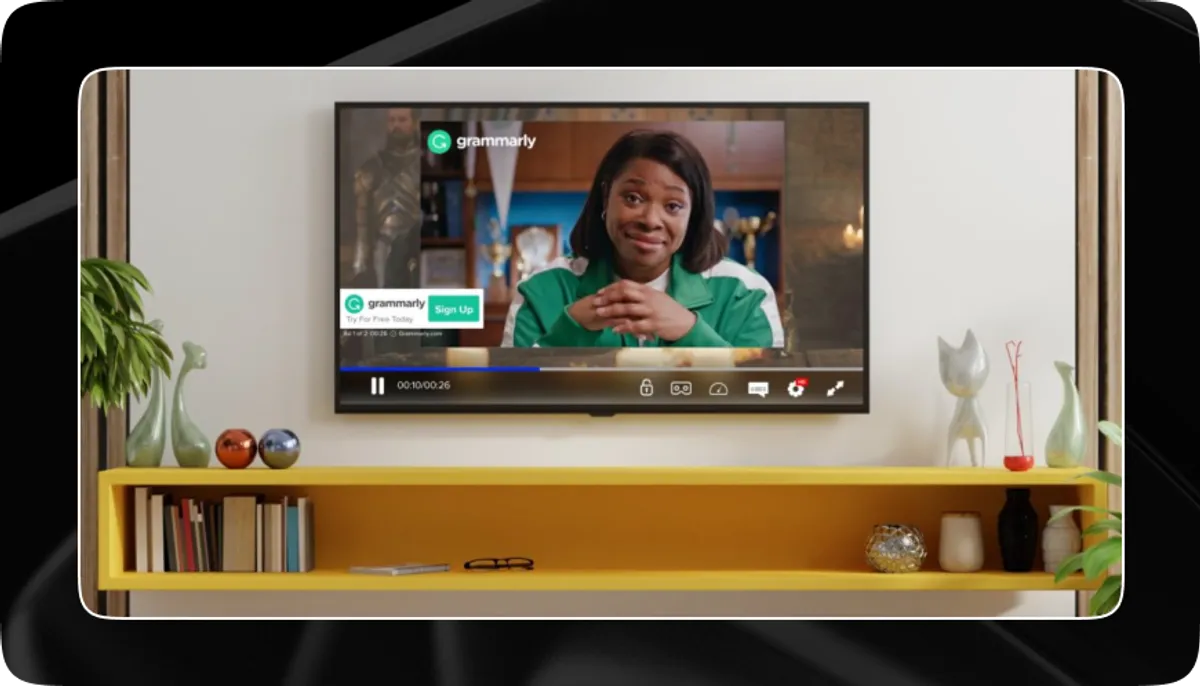
CTV and OTT pros:
You can reach a wider audience and constantly increase revenue, both through subscriptions and advertising.
With a high degree of personalization, advertisers can easily customize targeting for specific demographic groups.
The effectiveness of ad campaigns is rated more accurately.
With the advent of streaming services, advertising space can be purchased through programmatic advertising and real-time bidding (RTB). You can also set optimal settings for the desired audience, moving from pay-as-you-go deals to more flexible data-driven ad buys.
CTV and OTT cons:
Whether consumers buy streaming directly from providers or through intermediaries, advertisers often have no control over what content is shown in their ads.
Due to the absence of data, it isn't easy to extrapolate holistic performance and engagement patterns.
CTV and OTT don’t yet have agreed measurement standards or user or device identifiers, which can lead to fraud.
5 Unique insights from the TeqBlaze team
After you get the answer to the most common question, “Where can I advertise?” we can switch to practical advice. The advancement of niche ad networks represents a significant shift in the AdTech landscape. Such platforms offer advertisers an effective way to reach their desired demographic. Among some emerging trends in niche are:
Vertical-specific platforms focusing on healthcare, finance, or education.
Interest-based targeting is based on interests, hobbies, or online behaviors.
Mobile-first networks.
Data-driven marketing.
Unlike general-purpose ad networks, niche networks deliver ads to highly specific audiences. This targeted approach significantly enhances campaign performance since the ads are delivered to the audience interested in the product or service.
This year, the advertising industry has also undergone significant changes due to the advance of artificial intelligence. AI development has led to personalized advertising that considers each consumer's needs and desires (e.g., their age, social group, gender, and lifestyle). Not only does this help brands better understand their consumers’ needs and preferences, but it also creates a more effective advertising experience.
Furthermore, running cohesive campaigns across multiple advertising platforms strengthens the impact of your advertising efforts. Advertisers can create a stronger brand presence and drive engagement by maintaining a brand identity. Niche ad networks often provide tools and resources to help you coordinate your campaigns, providing a seamless experience for your audience.
Finally, consider white-label programmatic platforms for managing your own ad exchanges, controlling costs, and enhancing ROI. These platforms provide advertisers the necessary infrastructure and technology to buy and sell ad inventory directly without intermediaries.
See how TeqBlaze can boost your profits
As a white-label programmatic platform, TeqBlaze offers a comprehensive suite of tools and services and expert guidance throughout the entire campaign lifecycle. From audience segmentation and targeting to bid optimization and performance measurement, the TeqBlaze professional team helps businesses maximize their ROI and achieve their marketing goals. Our advanced technology enables real-time bidding, ensuring your ads are served to the most relevant audience at the optimal time.
TeqBlaze's expertise is exemplified in our work with a leading supply-side platform specializing in mobile and OTT publishers. The Client sought a custom media selling platform with optimized processes, advanced tools, and support for various ad formats.
The results?
Automated workflows and RTB-driven processes.
A customizable platform.
Enhanced targeting, reporting, and auction options.
Integration with multiple global partners for increased traffic.
Dedicated support from the TeqBlaze team.
This case study demonstrates the strength of strategic partnerships in delivering exceptional value to clients and optimizing monetization strategies for sustainable growth.
Conclusions
As you can see, even the most popular advertising websites have their own strengths and weaknesses. Choosing the best platform depends on your business goals, target audience, and budget. TeqBlaze recommends you not rely solely on advertising channels but think out the whole strategy. Remember, a successful campaign requires detailed planning, analysis, and testing. At TeqBlaze, we know how to deliver the best results that match your company values.
Book a demo to explore more opportunities for your growth!

 Anna Vintsevska
Anna Vintsevska





